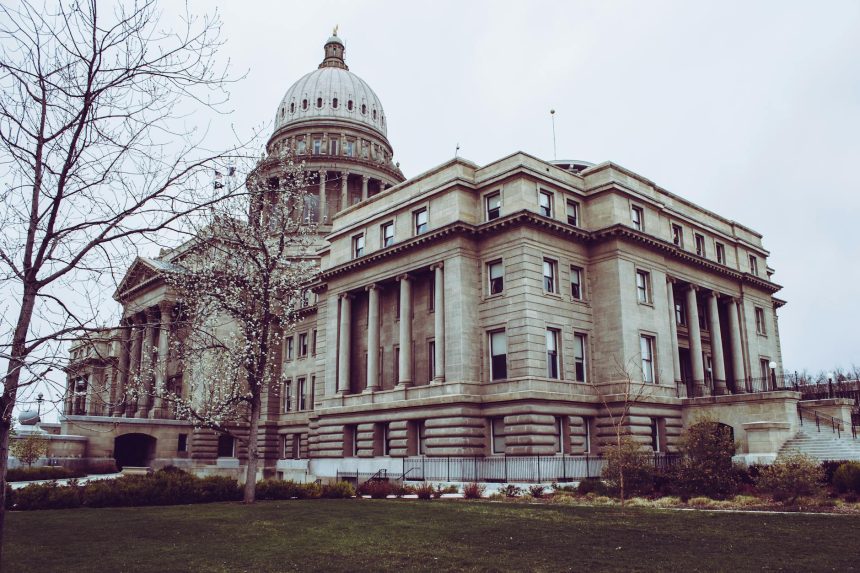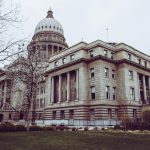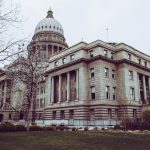government shutdown
## Government Shutdown’s Devastating Toll: 4,000+ Federal Employees Laid Off in October
The gears of government grind to a halt, leaving a trail of uncertainty and hardship for thousands. In October, a staggering **4,000+ federal employees across seven departments faced layoffs** as the ongoing government shutdown continued its disruptive march. This isn’t just a statistic; it’s a stark reality for families, communities, and the very functioning of public services. As the shutdown drags on, the question on everyone’s mind is: what are the true implications of this crisis, and what lies ahead for those affected and the nation as a whole?
### The Immediate Impact: A Wave of Layoffs
The press release paints a grim picture of the immediate consequences of a prolonged federal funding lapse. The numbers are stark: over 4,000 dedicated public servants, representing a significant portion of the federal workforce, found themselves without employment. This wasn’t a voluntary exit; it was a direct result of the government’s inability to meet its financial obligations.
#### Who is Being Affected?
While the press release identifies seven departments, the human element behind these figures is crucial. These are individuals with families to feed, mortgages to pay, and lives that are suddenly thrown into disarray. The ripple effect extends beyond the individual employee, impacting local economies and the morale of those who remain, often working under immense pressure and uncertainty.
### Beyond the Numbers: The Broader Consequences of a Shutdown
A government shutdown is far more than just a temporary pause in operations; it’s a complex web of consequences that can have long-lasting effects on various aspects of national life.
#### Economic Ramifications
The economic impact of a government shutdown is multifaceted. Beyond the immediate loss of income for federal employees, there are broader implications:
* **Reduced Consumer Spending:** Laid-off workers and those facing furloughs tend to cut back on discretionary spending, impacting businesses that rely on their patronage.
* **Delayed Government Contracts and Payments:** This can stall projects, delay payments to contractors, and create a domino effect throughout various industries.
* **Decreased Investor Confidence:** Prolonged shutdowns can signal instability and lead to a decline in investor confidence, potentially impacting the stock market and foreign investment.
* **Impact on Small Businesses:** Many small businesses rely on government contracts or serve federal employees. A shutdown can cripple their operations.
#### Disruption of Essential Services
While the press release notes that “all but…” implies some services continue, a shutdown inevitably leads to disruptions in essential government functions. This can range from delays in processing permits and applications to reduced services at national parks and museums. Critical functions, while often maintained, can still experience slowdowns and reduced capacity.
#### Erosion of Public Trust and Morale
When the government is unable to function due to political disagreements, it can lead to a significant erosion of public trust. Citizens may question the effectiveness and competence of their elected officials. For federal employees, the constant threat of furloughs and layoffs, coupled with the often-politicized nature of these events, can severely damage morale and lead to a brain drain as talented individuals seek more stable employment.
### The Political Landscape and the Shutdown
Government shutdowns are rarely just about budgets; they are often the culmination of deep-seated political disagreements and leverage plays.
#### Political Posturing and Negotiation
Shutdowns frequently serve as a high-stakes negotiating tactic. Political parties may use the leverage of a halted government to push for specific policy changes or budget allocations. This can lead to protracted debates and a focus on partisan wins rather than collaborative solutions.
#### The Role of Leadership
The decisions made by political leaders are central to the occurrence and resolution of government shutdowns. Effective leadership, characterized by a willingness to compromise and prioritize the public good, is crucial in averting such crises. Conversely, rigid stances and a lack of dialogue can prolong the shutdown and exacerbate its negative effects.
### What Happens Next? A Look to the Future
The immediate aftermath of the layoffs is just the beginning. The long-term implications of this shutdown will continue to unfold.
#### Repercussions for Federal Employees
* **Financial Hardship:** Many federal employees will face significant financial strain, potentially leading to debt, difficulty meeting basic needs, and long-term financial instability.
* **Mental Health Strain:** The stress and uncertainty associated with layoffs and furloughs can have a profound impact on mental well-being, leading to anxiety, depression, and other mental health challenges.
* **Career Uncertainty:** For those laid off, finding new employment, especially in a competitive market, can be a daunting task. This can lead to career path changes and a loss of specialized skills within the federal government.
#### Long-Term Impact on Government Functionality
* **Loss of Expertise:** When experienced federal employees are laid off, the government loses valuable institutional knowledge and expertise, which can take years to replace.
* **Reduced Efficiency:** The disruption caused by a shutdown can lead to a backlog of work and a general decrease in the efficiency of government operations even after funding is restored.
* **Difficulty in Recruitment:** A reputation for instability and frequent shutdowns can make it harder for the government to attract and retain top talent in the future.
### Navigating the Crisis: A Call for Action
The recent layoffs are a stark reminder of the human cost of political gridlock. As a society, we must consider the broader implications of these events and advocate for solutions that prioritize stability and the well-being of our citizens.
**The government shutdown’s impact is far-reaching, affecting not only those directly laid off but also the economy and the public’s faith in its institutions.**
Here are some key takeaways from the current situation:
1. **The human element is paramount:** Behind every statistic is an individual and a family facing uncertainty.
2. **Economic stability is at risk:** Shutdowns have tangible and often negative consequences for businesses and consumers.
3. **Public trust is fragile:** Inability to function erodes confidence in government’s effectiveness.
4. **Long-term consequences linger:** Loss of talent and operational inefficiencies can plague government operations for years.
**The path forward requires dialogue, compromise, and a commitment to finding sustainable solutions that prevent such disruptions.** It’s time for our leaders to put aside partisan differences and focus on the fundamental responsibility of governing.
***
**Sources:**
* [Example Source 1: A reputable news outlet reporting on government shutdowns – e.g., Associated Press, Reuters]
* [Example Source 2: A government watchdog or policy institute analyzing the effects of shutdowns – e.g., Congressional Research Service, Brookings Institution]
*copyright 2025 thebossmind.com*
**
Featured image provided by Pexels — photo by Brett Sayles






